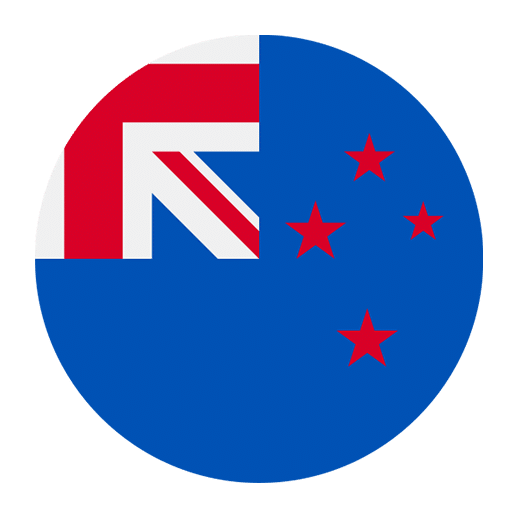The Māori language, also known as Te Reo Māori, is an indigenous language of New Zealand with a rich cultural heritage. For many years, it faced the threat of extinction due to colonization, urbanization, and the dominance of the English language. However, the past few decades have seen a remarkable revival of Te Reo Māori, thanks in large part to the establishment of Kōhanga Reo, or “language nests.” These are early childhood education centers where children are immersed in the Māori language from a very young age. This article explores the crucial role of Kōhanga Reo in revitalizing the Māori language, examining their history, methodology, impact, and future prospects.
History and Origins of Kōhanga Reo
The Kōhanga Reo movement began in the early 1980s as a grassroots initiative aimed at reversing the decline of the Māori language. At that time, only a small percentage of the Māori population were fluent speakers, and the language was at risk of being lost within a few generations. The idea was inspired by the success of other indigenous language immersion programs around the world, particularly in Canada and Hawaii.
In 1982, the first Kōhanga Reo was established in Wainuiomata, near Wellington. It was founded by Māori elders and educators who recognized the urgent need to pass on their language and culture to the younger generation. The Kōhanga Reo model quickly gained popularity, and by the late 1980s, there were hundreds of these centers across New Zealand.
Philosophy and Methodology
The philosophy of Kōhanga Reo is deeply rooted in Māori culture and values. The term “Kōhanga Reo” itself means “language nest,” symbolizing a nurturing environment where young children can grow and develop in their cultural and linguistic heritage. The primary aim is to create fluent speakers of Te Reo Māori by immersing children in the language during their formative years.
Immersion Approach
The immersion approach is the cornerstone of Kōhanga Reo. From the moment children enter the center, they are surrounded by the Māori language. All activities, whether they are educational, social, or recreational, are conducted in Te Reo Māori. This continuous exposure helps children to develop their language skills naturally, much like they would their first language.
Whānau Involvement
A unique aspect of Kōhanga Reo is the involvement of whānau (extended family). Parents, grandparents, and other family members are encouraged to participate in the daily activities of the center. This not only strengthens the child’s linguistic abilities but also reinforces cultural values and community ties. The involvement of whānau also helps to create a supportive environment for language learning that extends beyond the walls of the Kōhanga Reo.
Holistic Education
Kōhanga Reo emphasizes a holistic approach to education, integrating language learning with cultural practices, traditions, and values. Children are taught through storytelling, songs, games, and other traditional methods. They also learn about Māori customs, history, and spirituality, making language acquisition a deeply cultural experience.
Impact on Māori Language Revitalization
The impact of Kōhanga Reo on the revitalization of the Māori language has been profound. Several studies and reports have highlighted their success in producing fluent speakers and promoting cultural pride among the Māori community.
Increased Fluency
One of the most tangible impacts of Kōhanga Reo is the increase in the number of fluent Māori speakers. Children who attend these centers are more likely to become proficient in Te Reo Māori compared to those who do not. This has led to a growing number of young people who can speak the language, helping to ensure its survival for future generations.
Cultural Reconnection
Kōhanga Reo has also played a significant role in reconnecting Māori children and their families with their cultural heritage. Many parents and grandparents who may have lost touch with their language and culture are given the opportunity to relearn and pass on this knowledge. This cultural reconnection is vital for the overall well-being and identity of the Māori community.
Educational Success
Research has shown that children who attend Kōhanga Reo tend to perform better academically in later years. The skills and confidence they gain from being bilingual and culturally grounded provide a strong foundation for future learning. Many former Kōhanga Reo students go on to excel in both Māori and mainstream education systems.
Challenges and Criticisms
While Kōhanga Reo has been largely successful, it has not been without its challenges and criticisms. These need to be addressed to ensure the continued effectiveness and sustainability of the movement.
Funding and Resources
One of the main challenges faced by Kōhanga Reo is securing adequate funding and resources. Many centers operate on limited budgets, relying heavily on community support and volunteer efforts. This can make it difficult to maintain high-quality education and attract qualified staff.
Standardization and Quality Control
Another criticism is the lack of standardization and quality control across different Kōhanga Reo centers. While the decentralized nature of the movement allows for flexibility and community involvement, it can also lead to inconsistencies in the quality of education and language instruction.
Integration with Mainstream Education
There is also the ongoing challenge of integrating Kōhanga Reo graduates into the mainstream education system. While many students thrive, others may struggle with the transition from a Māori immersion environment to an English-dominated school. Finding ways to support these students and ensure a smooth transition is crucial for their continued success.
Future Prospects and Innovations
Despite these challenges, the future of Kōhanga Reo looks promising. There are several initiatives and innovations aimed at strengthening and expanding the movement.
Government Support
The New Zealand government has recognized the importance of Kōhanga Reo and has increased funding and support in recent years. This includes financial assistance for operational costs, teacher training programs, and resources for curriculum development. Continued government support is essential for the sustainability and growth of the movement.
Technology and Digital Resources
Advances in technology and digital resources offer new opportunities for Kōhanga Reo. Online platforms, apps, and multimedia resources can supplement traditional teaching methods and provide additional support for language learners. These tools can also help to connect Kōhanga Reo centers across the country, fostering collaboration and sharing of best practices.
Community and International Collaboration
Collaboration with other indigenous language revitalization programs around the world can provide valuable insights and support. Sharing experiences and strategies with similar movements in Canada, Hawaii, and other regions can help to strengthen the Kōhanga Reo model and adapt it to changing needs and circumstances.
Conclusion
The role of Kōhanga Reo in revitalizing the Māori language cannot be overstated. These early childhood education centers have been instrumental in increasing the number of fluent speakers, reconnecting Māori families with their cultural heritage, and promoting educational success. While there are challenges to be addressed, the future looks bright with continued support from the government, innovations in technology, and collaboration with other indigenous language movements.
Kōhanga Reo is more than just a language education program; it is a symbol of resilience, cultural pride, and community empowerment. By nurturing the youngest members of the Māori community in their language and culture, Kōhanga Reo is helping to ensure that Te Reo Māori will thrive for generations to come.

